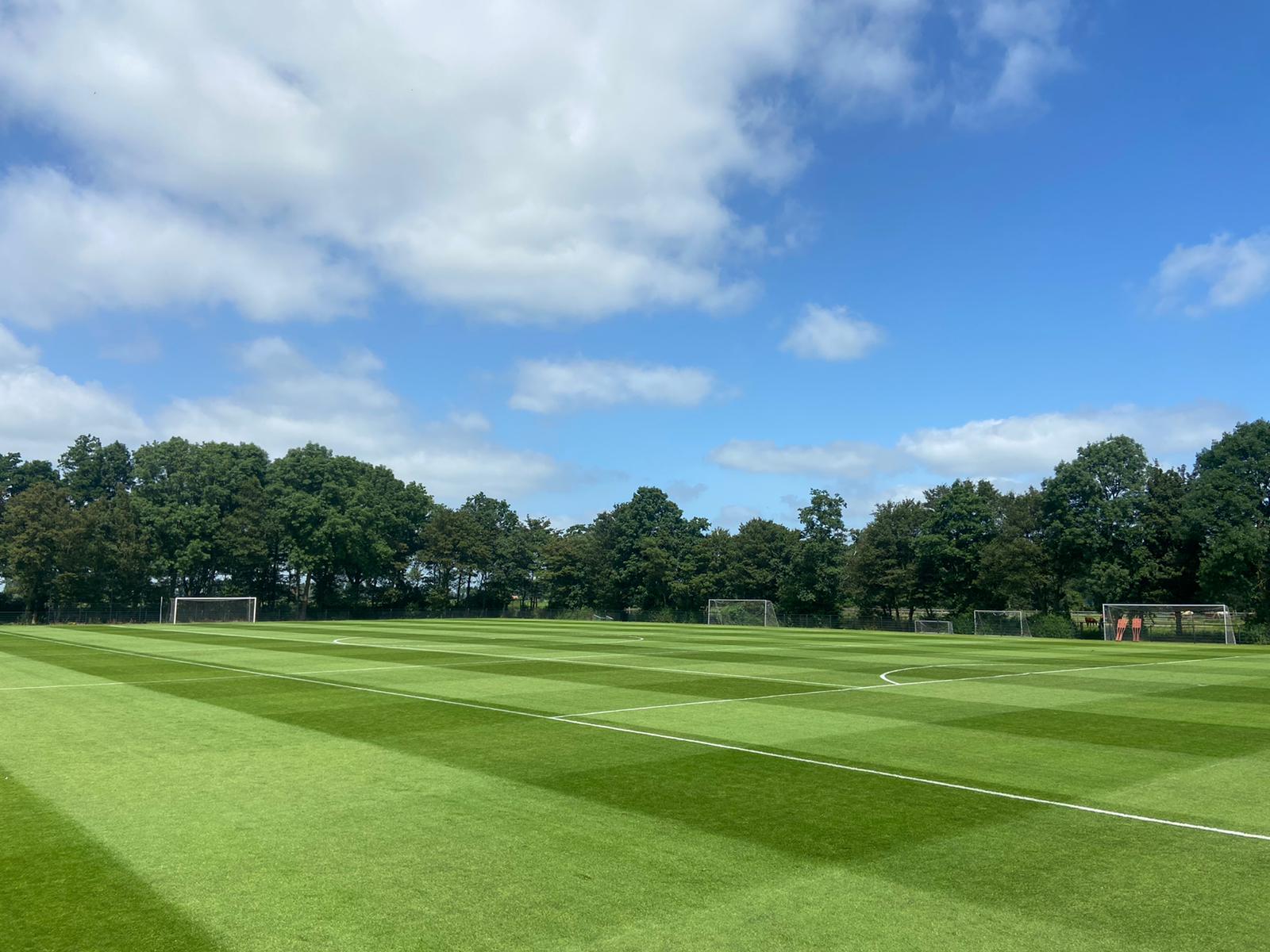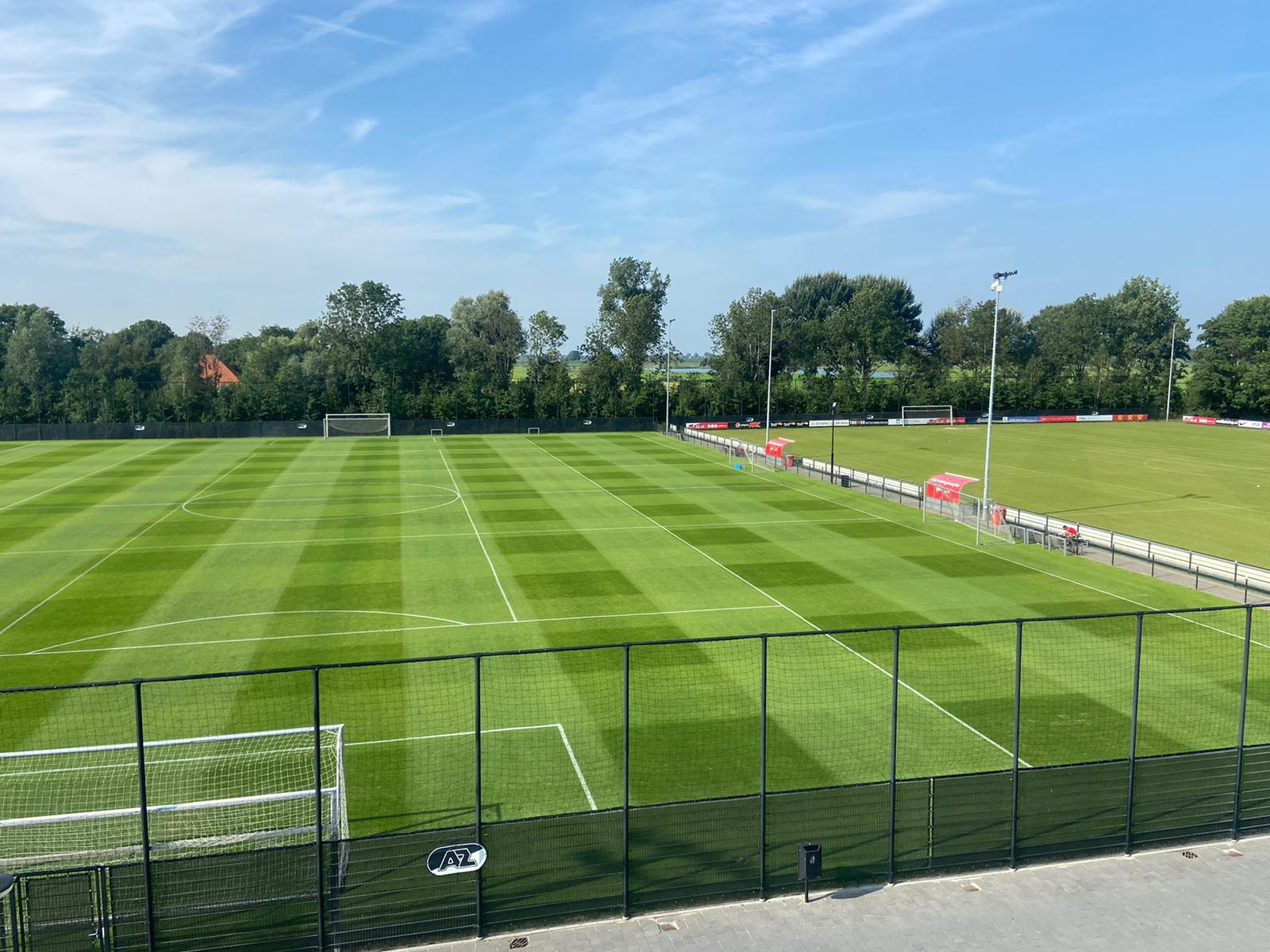The AQUA4D® system rented by Lescrauwaet BV has contributed significantly to solving turf issues at the AFAS Training Complex in Wijdewormer, home of AZ Alkmaar football club (Eredivisie). “We now have no more dead grass spots,” says groundsman Wouter Uitentuis. “That’s because the AQUA4D® water system creates smaller water clusters, so they get into the smallest pores.”
“In the first year when the training pitches were delivered, five years ago now, nobody could have foreseen how badly the grass would grow. There were a lot of bare patches of grass, especially near the overlap of the sprinklers,” explains says the groundsman, who manages the training fields. After the first season, 2 cm of the grass layer was milled off with a fieldtop maker, reseeded and fertilised. Due to the hot and dry summer the following year, the emerging grass burned immediately. Uitentuis: “We wondered what was causing this and started looking. We found out that it had to do with the salinity in the irrigation water. With this knowledge, we started spraying the fields much more to push away the salt, sometimes as much as 40 to 50 ml/m2 per night. Normally we give between 10 and 15 ml/m2 depending on the time of year.”
Getting the ball to roll faster
After a large amount of water, there was no watering for a few days until the turf dried out. That was the moment to start watering again. “As a result, it took longer than desired, also from the club’s point of view, before there was a reasonable grass surface. But at the overlap spots of the sprinklers we saw that the grass didn’t want to grow because of the salinized soil,” explains Uitentuis.
There was a second problem: AZ requested that the pitches should also be wet during the day, to help the ball speed. “In order to make the grass wet, we had to spray water in small doses even on a sunny summer day. This keeps the salty water on the blades of grass. The result was that the salt residue in particular burned into the leaves, causing the grass to turn yellow and die.” Later in the season, more rain did turn the grass green again. “As soon as the grass received fresh rainwater, the grass was back to its normal green colour within a week.”
The search for innovative irrigation technology
In order to remove the salt from the irrigation water (with an EC of 7.0), a Reverse Osmosis system was considered. But this system could not handle the amount of water from the pump, which has a capacity of 60 m3/hour. Tap water was not an option either, because there was no adequate connection to be made, and using drinking water would be expensive.
Two years ago, the groundsman called in Westhoven Agro Advies who put him in touch with AQUA4D® BeNeLuxDu importer Lescrauwaet BV in Hilversum for treatment of the surface water. With the AQUA4D® water system, the irrigation water is treated with resonance fields, which improves or refines the structure of water clusters.
The Swiss-based firm have more than 4,200 water systems operational in 40+ countries, in horticulture, sports fields, landscapes, and sustainable buildings.
A test was Conducted by connecting and disconnecting sprinklers to the AQUA4D® water system. “At first we were sceptical, because we thought that no system could do it properly,” explains Uitentuis. But we soon saw a difference with AQUA4D. With the sprinklers whose water had not been treated, the grass quickly burned.”
Smaller droplets roll off leaves
According to the groundsman, this watering system has the required capacity, is affordable, and has a positive effect on bare grass areas. “The water surface tension is lower, so the water droplets are smaller and less spherical. We can also see this in the water that is sprayed more when watering the grass. Due to the change in water clusters, the water droplets no longer remain on the leaf. Because they roll off, we also no longer have any salt residue. As a result, the grass no longer burns.”
A new approach to water management
The AQUA4D® system has made a significant difference to the grass patches that refused to grow. “Every year is different here – it can be warmer or colder, more or less sunlight and drier or wetter. Water is one facet of the whole picture, but the most important one. In summer, we now have a different fertilisation policy with more coated fertilisers, which are released slowly, and we spray urea fertiliser on the leaves,” says Uitentuis.
“We are pleased with the beautiful green turf this summer. It really is a picture,” he concludes.
—–
Find out more about sustainable water management for football: https://news.aqua4d.com/sustainable-football-irrigation/






